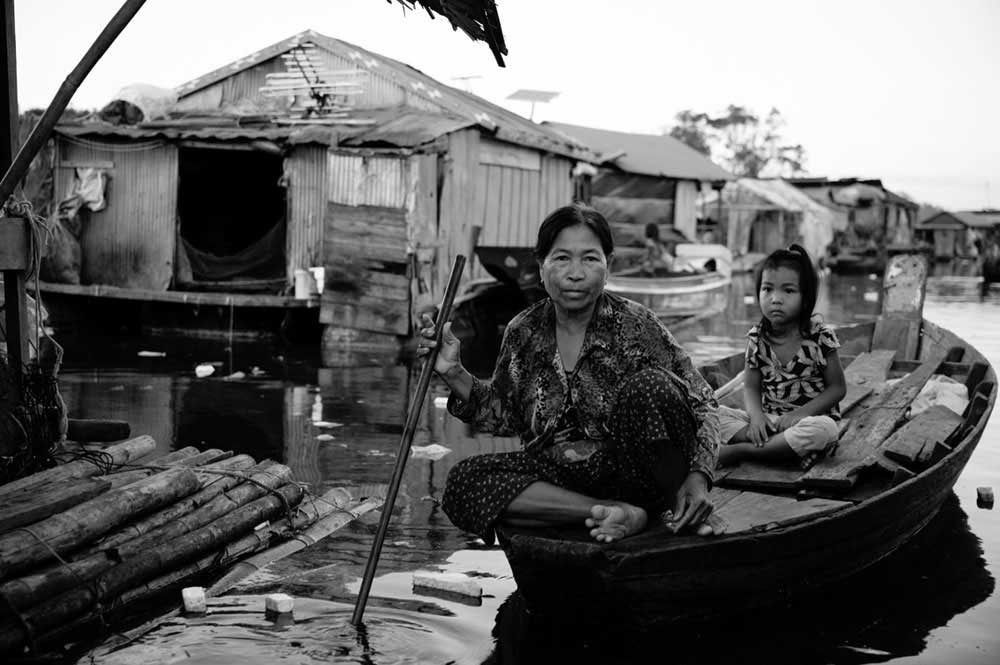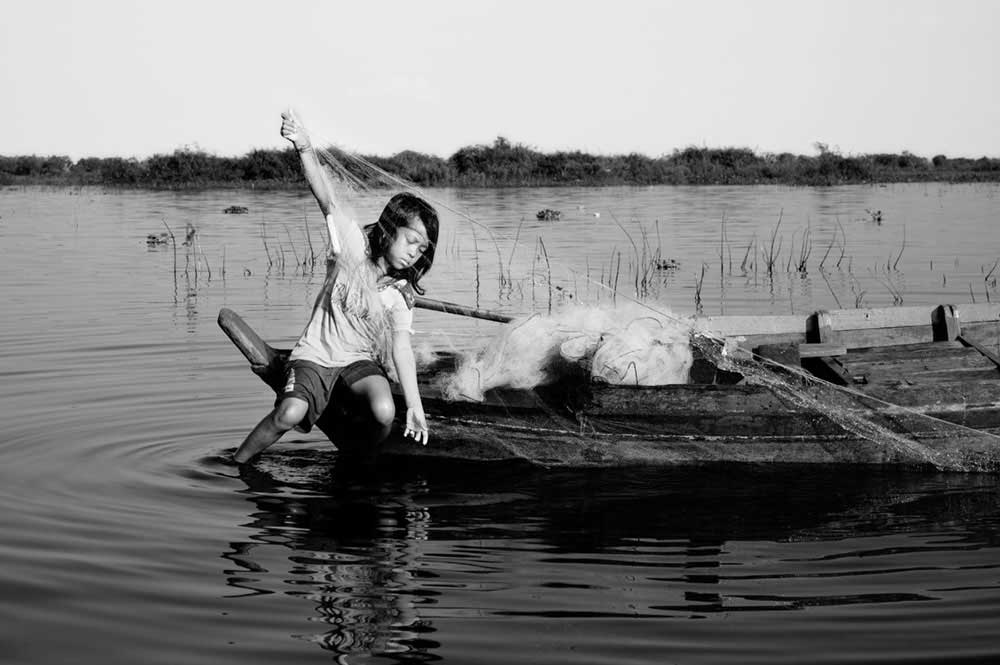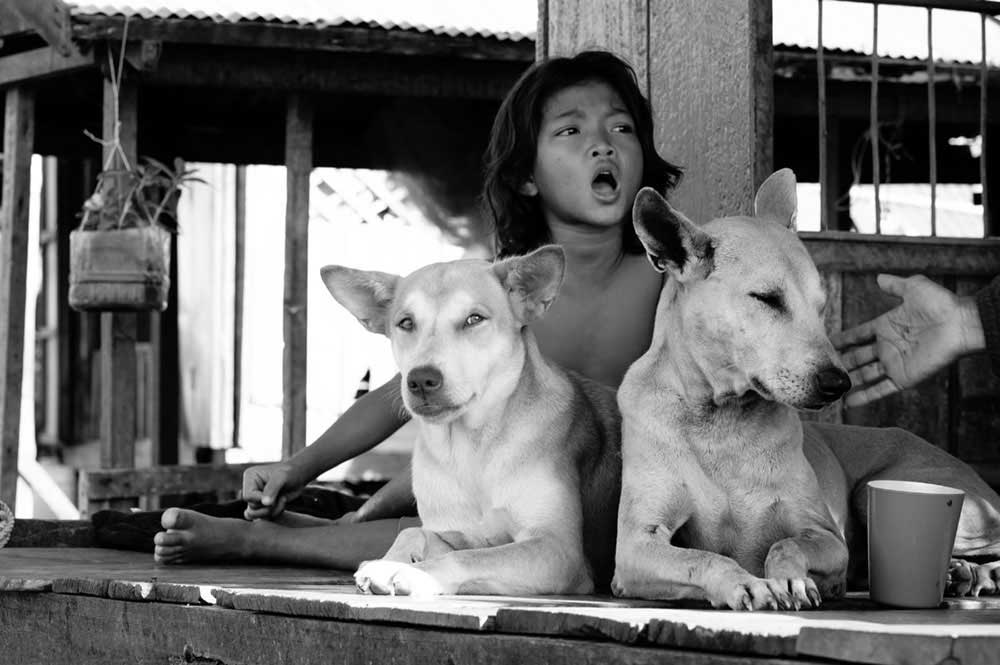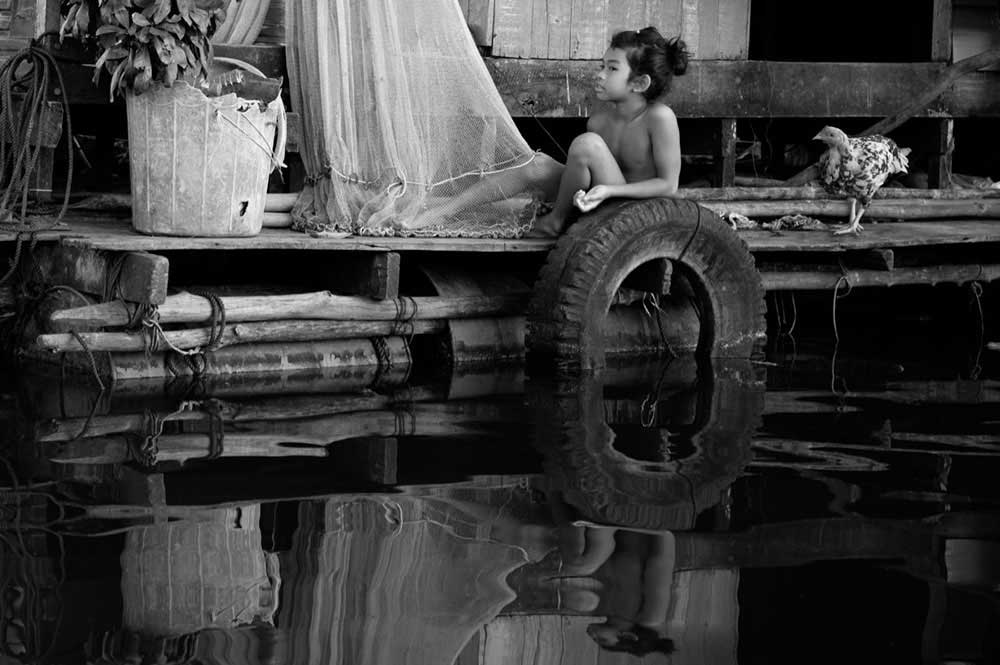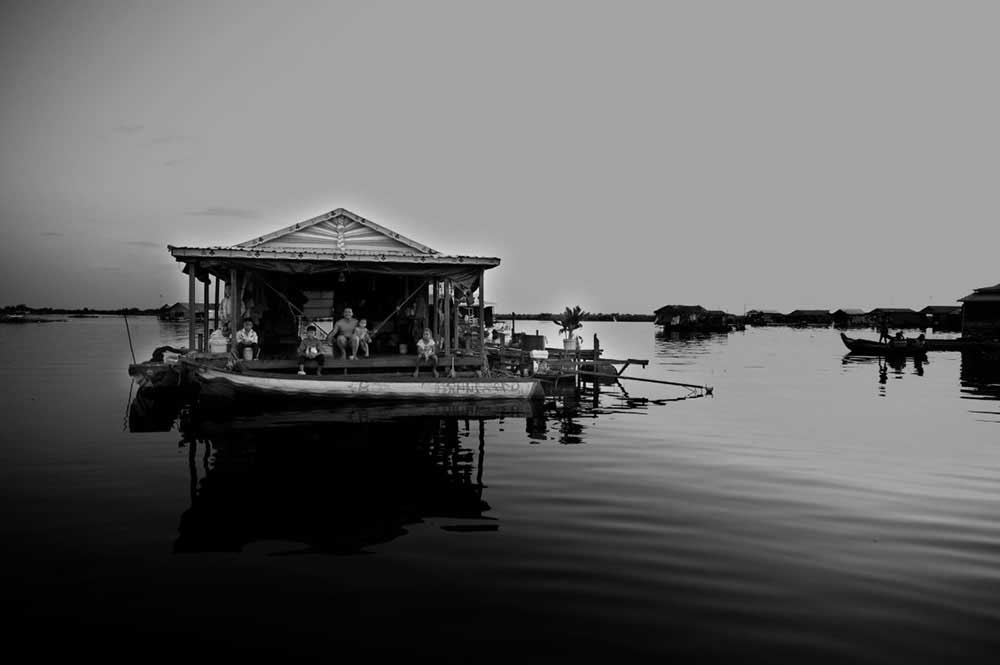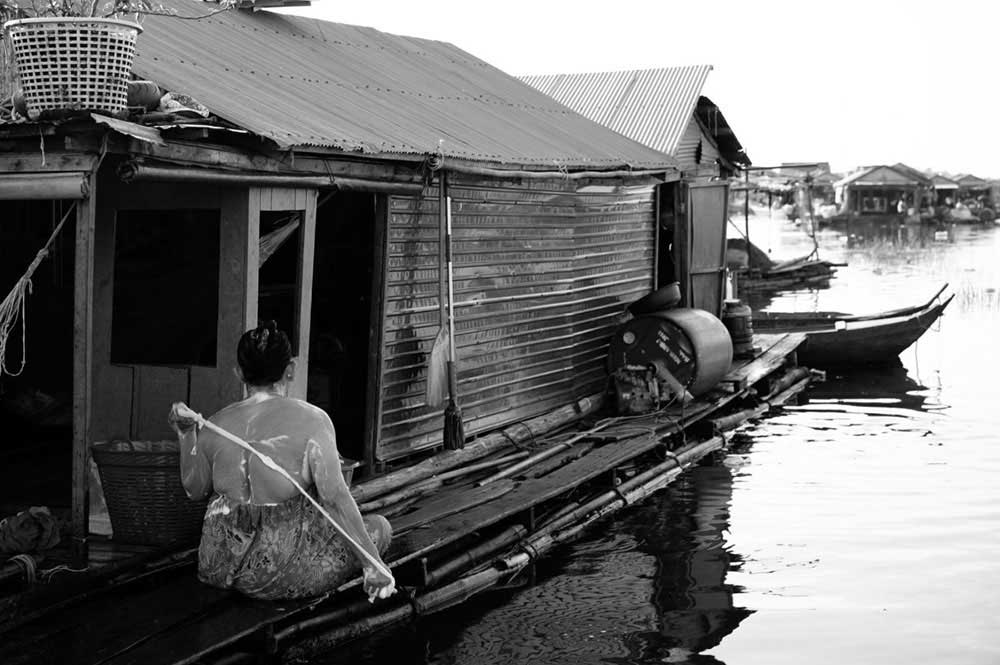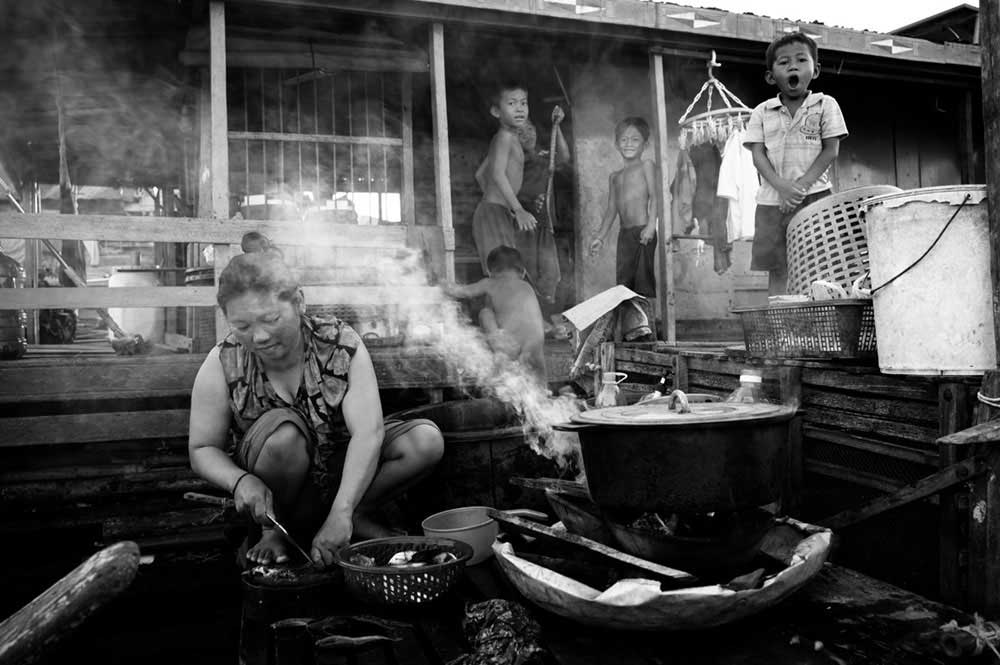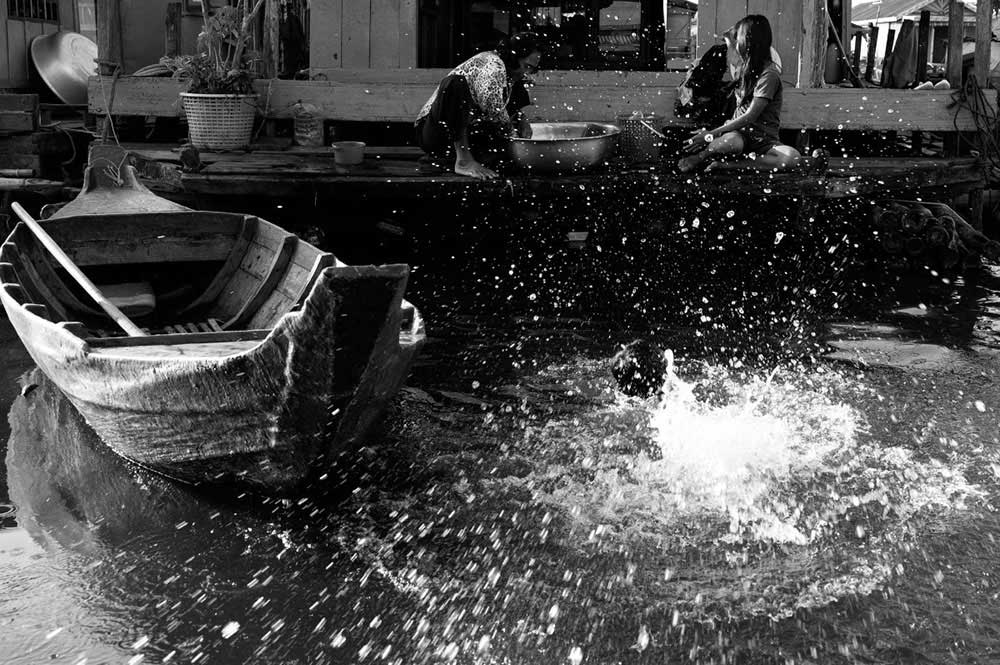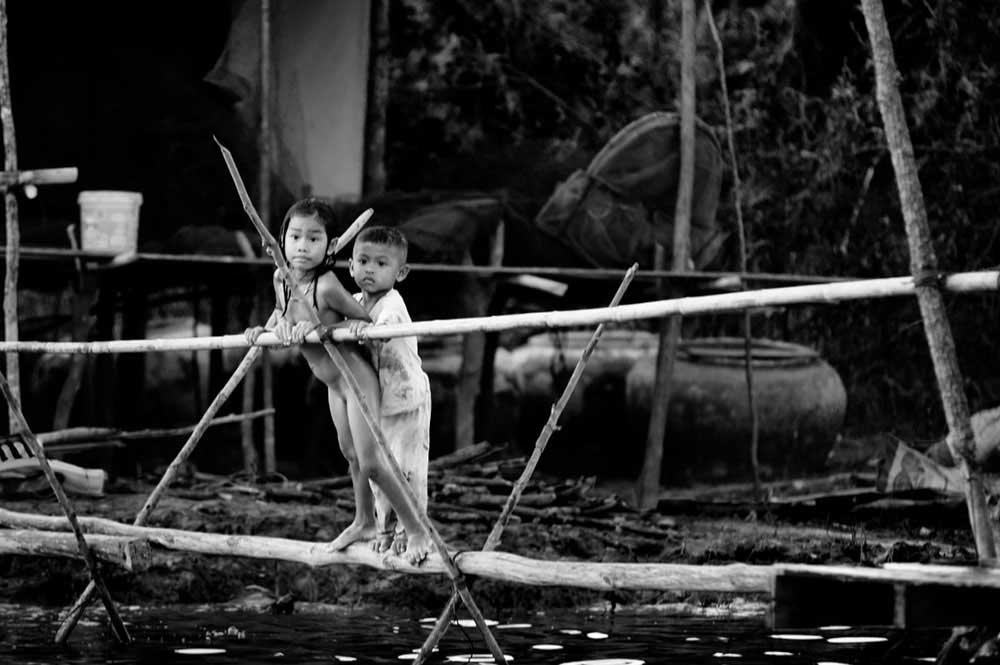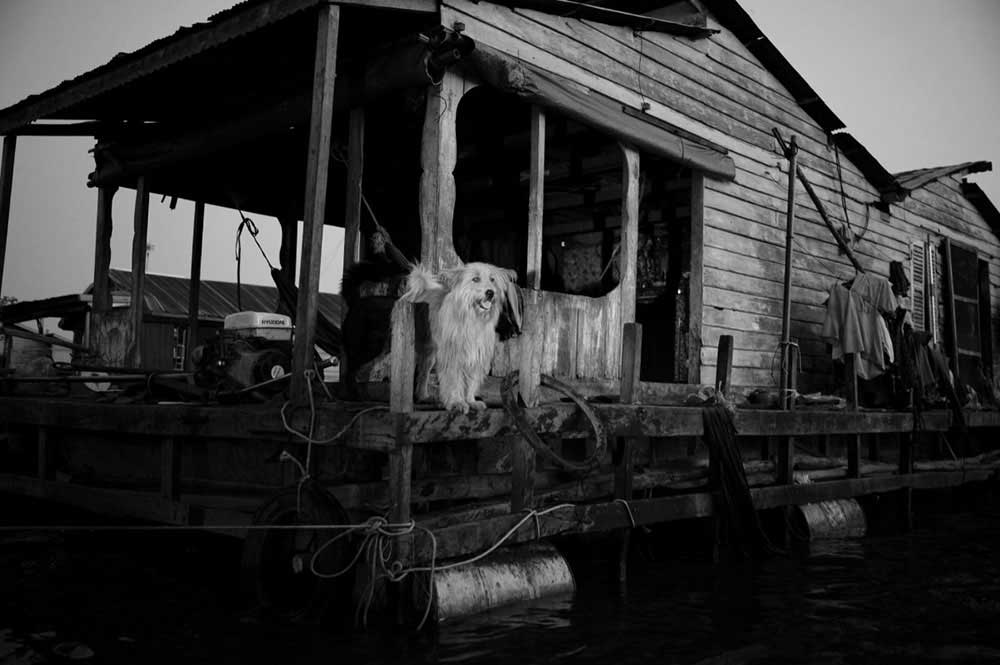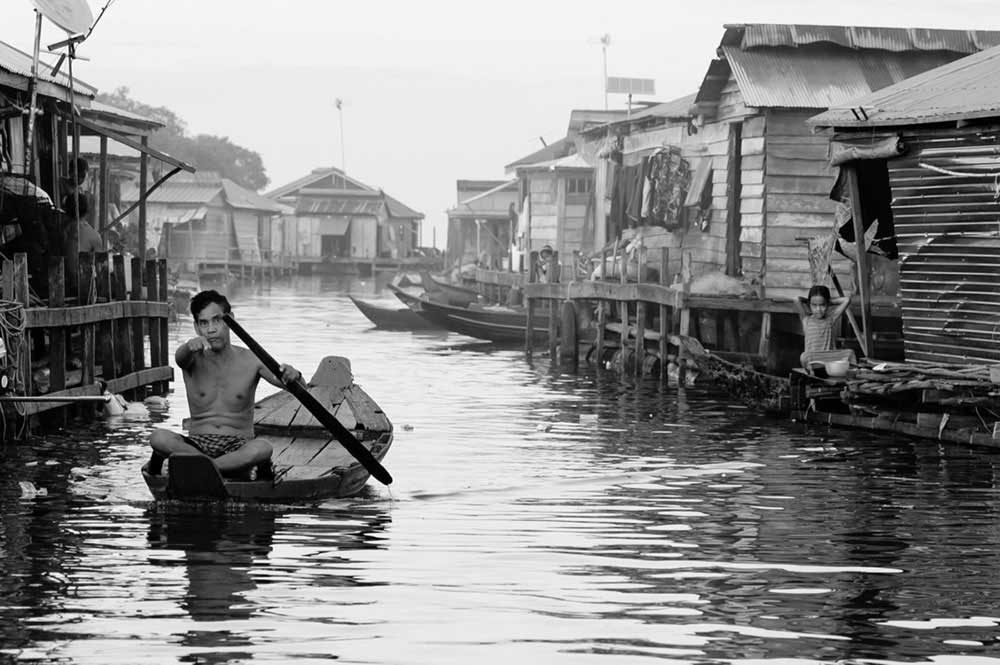The Tonle Sap Lake near Siem Reap is the largest freshwater lake in Southeast Asia. It’s one of the richest inland fishing grounds in the world and home to over one million people.
The majority of these people live directly on the water in houseboats which create pockets of floating villages throughout this 1,042 sq mile lake. Several communities of people, up to 1000 families, are living on the Tonle Sap Lake.
The river population is a mix of ethnic groups: Cambodian, Vietnamese and some Chinese families all crowd onto the self-built boats and rafts. Floating stores, schools, an ice factory, a Buddhist pagoda and even a Catholic church have been built. The inhabitants make a living from fishing or bartering. Chinese vegetable and rice sellers supply the people with basic essentials by boat. In the eyes of the authorities, they are living there illegally. As «sans-papiers», they are neither registered, nor do they have access to state education, the health system, or any other rights. The population consists mainly of women and children. Most men have apparently abandoned their families completely or are trying to earn a living in the big cities, for example as tuk-tuk drivers. Much of the work is done by children. Girls barely older than eight fish to support their families. Child mortality rates are high.
Today the existence of the villages is threatened, because the government intended to close them down in the foreseeable future and relocate the inhabitants.
About Steff Gruber
Steff Gruber (1953) is a Swiss photographer and filmmaker. He worked as a press photographer for Keystone Press and was one of the first filmmakers to deal with the docudrama genre. He became internationally known with his documentary LOCATION AFRICA, about the shooting of Werner Herzog and Klaus Kinski for the film COBRA VERDE.
Based on his interest in documentaries, Gruber began shooting photo stories in various countries that focused, in particular, on human interest subjects and humanist concerns. He produced many of his photo series over a period of several years, visiting places and people on repeated occasions.
In 2020 Steff Gruber opened the Lumiere.Gallery for digital photo exhibitions. Steff Gruber is a member of the Swiss Association of Journalists and Photographers IMPRESSUM. [Official Website]



